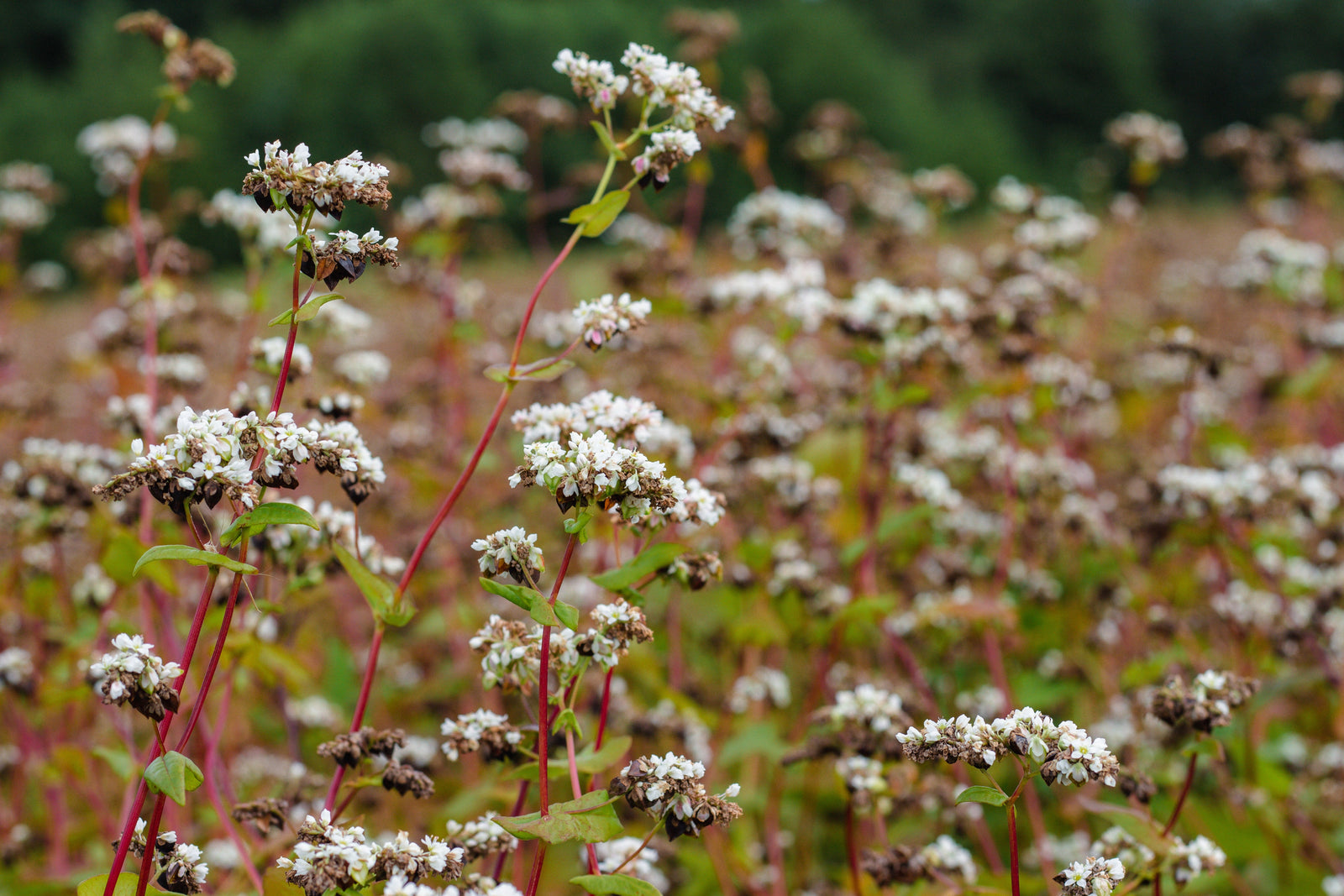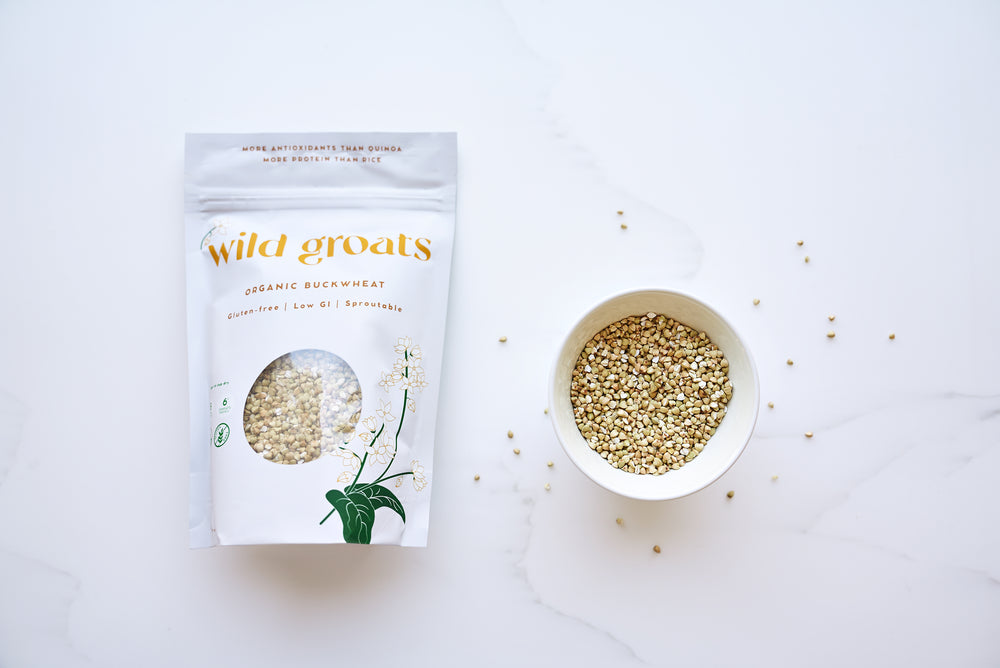Wild Groats for Sustainability

Aside from its many health and nutrient benefits, one of the top reasons we love buckwheat is because it is an earth-friendly, sustainable crop with a low carbon footprint that supports regenerative agriculture.
Many conventional whole grain crops, such as brown rice and whole wheat, actually rank among the least sustainable crops with a negative environmental impact. Both rice and wheat are water-intensive crops. The production and processes involved in growing them (i.e. inorganic fertilizers and pesticides) are known to emit greenhouse gases into the air. Furthermore, other conventional crops like corn and soy, along with wheat, are farmed using the detrimental methods of monocropping, which deplete the soil of nutrients (excessive use of this method can render the soil almost unusable over time).
This is why regenerative agriculture has not only become the future of food, but also what our planet and its inhabitants need to ensure a better and thriving future. It’s the direction we must take in terms of food production and farming practices to counteract climate change and sustain our planet for generations to come. This is primarily achieved by restoring the health of our soil.

So back to Wild Groats…
How does buckwheat play a pivotal role in supporting regenerative agriculture?
More and more farmers are using buckwheat as a cover crop to increase crop diversity and improve soil health.
Some of the benefits of using buckwheat as a cover crop include:
- It’s a naturally fast-growing crop (flowers within 77-90 days) and it creates a soil-shielding canopy
- It suppresses weeds, and its fast germination allows for better weed control
- It thrives without the use of herbicides or pesticides
- Bees love it! Buckwheat flowers attract honeybees and other pollinators, supporting healthy populations of beneficial insects
- It rejuvenates low-fertility soil (e.g., over-farmed soils)
- It extracts phosphorus from the soil, preserving nutrients for future crops
- It also adds key nutrients to the soil (again, great for future crops and soil nutrient regeneration!)
- It generates minimal waste as every part of the buckwheat seed can be used, including the outer hull for fertilizer products or animal feed
So, it’s clear that farmers LOVE buckwheat, bees LOVE buckwheat, our Earth's soil LOVES buckwheat, and we hope you do too after learning more about this eco-friendly super plant!



